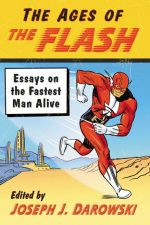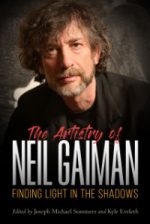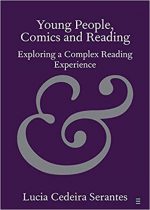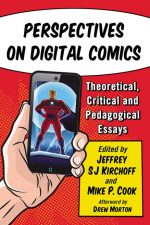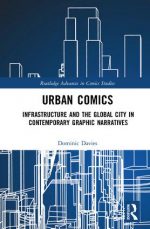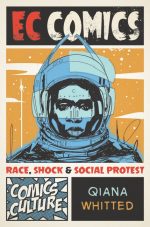CFP: The Figure of the Terrorist in Literature, Film and Media
CFP: The Wakandan Civitas and its Panthering Futurity
Hamburger Literaturpreis für Comics
Erstmals schreibt die Hamburger Behörde für Kultur und Medien unterstützt vom Comicfestival Hamburg e.V. einen Literaturpreis auch für Comics aus. Der mit 6000 Euro dotierte Preis wird am 2. Dezember 2019 im Literaturhaus Hamburg verliehen. Eingereicht werden können bisher unveröffentlichte Arbeiten und Arbeitsproben von Comiczeichner_innen aus Hamburg:
Auszug aus der Pressemitteilung:
Die Ausschreibung richtet sich an Comiczeichner*innen, die in Hamburg oder im Gebiet des Hamburger Verkehrsverbundes ihren ersten Wohnsitz und Lebensmittelpunkt haben. Ausgezeichnet wird ein Comic, eine Graphic Novel oder eine erzählerisch komplexe Bildgeschichte mit einem geplanten Umfang von mindestens 48 Seiten. Es können Arbeitsproben aus unfertigen oder abgeschlossenen Werken eingereicht werden, die unveröffentlicht sind und nicht bei einem anderen Wettbewerb ausgezeichnet wurden. Die teilnehmenden Werke dürfen bis zur Preisverleihung nicht veröffentlicht werden.
Einsendeschluss ist der 15. August 2019.
Alle Informationen und die Bewerbungsunterlagen finden sich auf den Seiten des Stadtportals Hamburg sowie Literatur in Hamburg.
Shortlist der Eisner Awards 2019
 Jüngst wurde die Shortlist der Nominierten für die 2019 Will Eisner Industry Awards bekannt gegeben. Die Eisner-Awards werden seit 1988 jährlich und in mittlerweile 31 (!) Kategorien vergeben. Darunter auch die Kategorie «Best Academic/Scholarly Work» deren Nominierte dieses Jahr sind:
Jüngst wurde die Shortlist der Nominierten für die 2019 Will Eisner Industry Awards bekannt gegeben. Die Eisner-Awards werden seit 1988 jährlich und in mittlerweile 31 (!) Kategorien vergeben. Darunter auch die Kategorie «Best Academic/Scholarly Work» deren Nominierte dieses Jahr sind:
- Between Pen and Pixel: Comics, Materiality, and the Book of the Future, by Aaron Kashtan (Ohio State University Press)
- Breaking the Frames: Populism and Prestige in Comics Studies, by Marc Singer (University of Texas Press)
- The Goat-Getters: Jack Johnson, the Fight of the Century, and How a Bunch of Raucous Cartoonists Reinvented Comics, by Eddie Campbell (Library of American Comics/IDW/Ohio State University Press)
- Incorrigibles and Innocents, Constructing Childhood and Citizenship in Progressive Era Comics, by Lara Saguisag (Rutgers University Press)
- Sweet Little C*nt: The Graphic Work of Julie Doucet, by Anne Elizabeth Moore (Uncivilized Books)
Alle weiteren Infos, Kategorien- und Nominierten-Listen gibt es hier.
Comic-Professionalist_innen können unter www.eisnervote.com bis 14. Juni über die Gewinner_innen abstimmen. Die Ergebnisse werden im Rahmen einer Gala am 19. Juli 2019 verlautbart.
Jahrestagung der ISSN 2019 in Navarra
Vom 30.05. bis zum 01.06. findet die diesjährige Jahrestagung der International Society for the Study of Narrative (ISSN) unter der Leitung von Prof. Rocío G. Davis, Prof. Rosalía Baena und Prof. Anabel Martínez an der Universidad de Navarra in Pamplona (Spanien) statt.
Insgesamt wartet die Tagung dieses Jahr mit 14 Sessions mit jeweils mehreren Panels zur Erzählforschung auf – darunter auch ganze fünf Panels zum Thema Comic und Graphisches Erzählen:
- Die Panels Narrative Strategies of Uncertainty in Comics, Narrative and Image: Comics and Graffiti und Lists in Comics and Graphic Narratives finden am am 30.05. statt.
- Das Panel Telling Images: Figuring Out Graphic Narratives ist für den 31.05 angesetzt.
- Am 01.06. findet dann zuletzt das Panel Clutter in the Glutter: Visual “Disorder” in Comic Book Narratives der AG Comicforschung statt, bei dem auch mehrere ComFor-Mitglieder vertreten sind:
Clutter in the Glutter: Visual “Disorder” in Comic Book Narratives (15.30-17:00)
Chair: Vanessa Ossa, University of Tübingen
Lukas R. A. Wilde (Tübingen): Graphic Mediation and Material Re-Enactment: Sebastian Lörscher’s Making Friends in Bangalore.
Vanessa Ossa (Tübingen): The Fragmented and Layered Narrative in Matt Kindt’s Comic Series Mind MGMT.
Marina Rauchenbacher & Katharina Serles (Wien): Queering Comics: ‘Fatties’ and ‘Whores’, Gender Gaps and Body Signs.
Das vollständige Programm findet sich auf der Veranstaltungsseite.
Allgemeine Informationen zur ISSN aus dem Veranstaltungstext:
„The International Society for the Study of Narrative (ISSN) is a nonprofit association of scholars dedicated to the investigation of narrative, its elements, techniques, and forms; its relations to other modes of discourse; and its power and influence in cultures past and present.
“Narrative” for us is a category that may include the novel, epic poetry, history, biography, autobiography, film, the graphic arts, music, performance, legal writing, medical case histories, and more.
The Society sponsors the International Conference on Narrative each year. The first conference was held at Ohio State University in 1986, and in subsequent years, the meeting has been held at sites across the United States, Canada, and Europe. At each conference, approximately 350 speakers address issues of narrative from a variety of positions and perspectives.“
Monitor 51: Neue Publikationen
Im Monitor werden in unregelmäßigen Abständen aktuelle Publikationen aus den letzten 6 Monaten vorgestellt, die für die Comicforschung relevant sein könnten. Die kurzen Ankündigungstexte dazu stammen von den jeweiligen Verlagsseiten. Haben Sie Anregungen oder Hinweise auf Neuerscheinungen, die übersehen worden sind und hier erwähnt werden sollten? Das Team freut sich über eine Mail an redaktion@comicgesellschaft.de.
→ Zu früheren Monitoren.
Peanuts and American Culture: Essays on Charles M. Schulz’s Iconic Comic Strip
Peter W. Y. Lee
McFarland
211 Seiten
März 2019
Verlagsseite
„Peanuts creator Charles M. Schulz insisted good ol’ Charlie Brown and his friends were neither “great art” nor “significant.” Yet Schulz’s acclaimed daily comic strip—syndicated in thousands of newspapers over five decades—brilliantly mirrored tensions in American society during the second half of the 20th century.
Focusing on the strip’s Cold War roots, this collection of new essays explores existentialism, the reshaping of the nuclear family, the Civil Rights Movement, 1960s counterculture, feminism, psychiatry and fear of the bomb. Chapters focus on the development of Lucy, Peppermint Patty, Schroeder, Franklin, Shermy, Snoopy and the other characters that became American icons.“
Serial Selves: Identity and Representation in Autobiographical Comics
Frederik Byrn Køhlert
Rutgers University Press
242 Seiten
März 2019
Verlagsseite
„Autobiography is one of the most dynamic and quickly-growing genres in contemporary comics and graphic narratives. In Serial Selves, Frederik Byrn Køhlert examines the genre’s potential for representing lives and perspectives that have been socially marginalized or excluded. With a focus on the comics form’s ability to produce alternative and challenging autobiographical narratives, thematic chapters investigate the work of artists writing from perspectives of marginality including gender, sexuality, disability, and race, as well as trauma. Interdisciplinary in scope and attuned to theories and methods from both literary and visual studies, the book provides detailed formal analysis to show that the highly personal and hand-drawn aesthetics of comics can help artists push against established narrative and visual conventions, and in the process invent new ways of seeing and being seen.
As the first comparative study of how comics artists from a wide range of backgrounds use the form to write and draw themselves into cultural visibility, Serial Selves will be of interest to anyone interested in the current boom in autobiographical comics, as well as issues of representation in comics and visual culture more broadly.“
The Ages of The Flash: Essays on the Fastest Man Alive
Joseph J. Darowski (Hg.)
McFarland
194 Seiten
April 2019
Verlagsseite
„While many American superheroes have multiple powers and complex gadgets, the Flash is simply fast. This simplicity makes his character easily comprehendible for all audiences, whether they are avid comic fans or newcomers to the genre, and in turn he has become one of the most iconic figures in the comic-book industry. This collection of new essays serves as a stepping-stone to an even greater understanding of the Flash, examining various iterations of his character—including those of Jay Garrick, Barry Allen, Wally West and Bart Allen—and what they reveal about the era in which they were written.“
The Artistry of Neil Gaiman: Finding Light in the Shadows
Joseph Michael Sommers und Kyle Eveleth (Hgs.)
University Press of Mississippi
300 Seiten
April 2019
Verlagsseite
„Neil Gaiman (b. 1960) reigns as one of the most critically decorated and popular authors of the last fifty years. Perhaps best known as the writer of the Harvey, Eisner, and World Fantasy-award winning series The Sandman, Gaiman quickly became equally renowned in literary circles for Neverwhere, Coraline, and award-winning American Gods, as well as the Newbery and Carnegie Medal-winning The Graveyard Book. For adults, children, comics readers, and viewers of the BBC’s Doctor Who, Gaiman’s writing has crossed the borders of virtually all media, making him a celebrity around the world.
Despite Gaiman’s incredible contributions to comics, his work remains underrepresented in sustained fashion in comics studies. The thirteen essays and two interviews with Gaiman and his frequent collaborator, artist P. Craig Russell, examine the work of Gaiman and his many illustrators. The essays discuss Gaiman’s oeuvre regarding the qualities that make his work unique in his eschewing of typical categories, his proclamations to „make good art,“ and his own constant efforts to do so however the genres and audiences may slip into one another.
The Artistry of Neil Gaiman forms a complicated picture of a man who always seems fully assembled virtually from the start of his career, but only came to feel comfortable in his own voice far later in life. „
Tagung „Beyond Maus – The Legacy of Holocaust Comics“ in Graz
 Das Centrum für Jüdische Studien der Universität Graz veranstaltet vom 26.-29. Mai 2019 eine internationale Tagung zum Thema Beyond Maus: In insgesamt neun Panels setzen sich über 20 Vorträge und Diskussionen mit der Repräsentation, Verarbeitung und Nachwirkung des Holocausts im Comic auseinander in unterschiedlichen medialen, nationalen wie historischen Kontexten und Genres. Organisiert wird die Tagung von Hans-Joachim Hahn und den ComFor-Mitgliedern Markus Streb und Ole Frahm (Gründungsmitglied der Hamburger Arbeitsstelle zur Erforschung der Grafischen Literatur [ArGL]). Ebenso finden sich Vorträge der ComFor-Mitglieder Kalina Kupczynska, Jaqueline Berndt, Christine Gundermann und Jörn Ahrens auf dem Programm; darüber hinaus findet eine Diskussionsrunde mit u.a. Veronique Sina und Marie Schröer statt.
Das Centrum für Jüdische Studien der Universität Graz veranstaltet vom 26.-29. Mai 2019 eine internationale Tagung zum Thema Beyond Maus: In insgesamt neun Panels setzen sich über 20 Vorträge und Diskussionen mit der Repräsentation, Verarbeitung und Nachwirkung des Holocausts im Comic auseinander in unterschiedlichen medialen, nationalen wie historischen Kontexten und Genres. Organisiert wird die Tagung von Hans-Joachim Hahn und den ComFor-Mitgliedern Markus Streb und Ole Frahm (Gründungsmitglied der Hamburger Arbeitsstelle zur Erforschung der Grafischen Literatur [ArGL]). Ebenso finden sich Vorträge der ComFor-Mitglieder Kalina Kupczynska, Jaqueline Berndt, Christine Gundermann und Jörn Ahrens auf dem Programm; darüber hinaus findet eine Diskussionsrunde mit u.a. Veronique Sina und Marie Schröer statt.
Veranstaltungstext:
„Long before Art Spiegelman’s MAUS – A Survivor’s Tale appeared, there were reflections on the Holocaust to be found in comics. Already within the camps, early series of drawings like Mickey au Camps de Gurs (1942) were circulated, which bear some similarities to comics. And after the liberation, the persecution and annihilation of European Jewry was taken up as a central theme in comic books starting with Joe Kubert’s short story Golem (1946). MAUS marked an obvious transition in the perception of the relation between the Holocaust and comics, but in contrast to Spiegelman’s intentions MAUS was less noticed within the history of comics than in the history of the representation of the Holocaust. At the same time MAUS enabled numerous further representations of the genocide in comics.
The conference aims at a closer examination of the relation between the historical events of the Endlösung (“final solution”) and their different reflections in comics. How do series of images as well as comics position themselves with regard to the debate on the limitations of representing the annihilation of the Jews of Europe? What sort of visual memory do comics offer in light of a discourse dominated by photography and film?
Which other narratives can be read here in comparison to the widely discussed literary narratives? Many superhero comics, often such with figures like the golem, devise a fictional vocabulary of images, forming an aesthetics and truth regarding the Holocaust, which have been very much neglected until today. The conference also asks how comics have altered the discourse on the Holocaust: What future of the memory of Auschwitz do comics hold in store for us? All these questions shall be discussed at length on the basis of a variety of examples as well as methodological and theoretical reflections.“
Weitere Informationen, das Tagungsprogramm und ausführliche Abstracts der Vorträge finden sich im Programmflyer (PDF).
Monitor 50: Neue Publikationen
Im Monitor werden in unregelmäßigen Abständen aktuelle Publikationen aus den letzten 6 Monaten vorgestellt, die für die Comicforschung relevant sein könnten. Die kurzen Ankündigungstexte dazu stammen von den jeweiligen Verlagsseiten. Haben Sie Anregungen oder Hinweise auf Neuerscheinungen, die übersehen worden sind und hier erwähnt werden sollten? Das Team freut sich über eine Mail an redaktion@comicgesellschaft.de.
→ Zu früheren Monitoren.
Young People, Comics and Reading: Exploring a Complex Reading Experience
Lucia Cedeira Serantes
Elements in Publishing and Book Culture
Cambridge University Press
110 Seiten
Februar 2019
Verlagsseite
„Scholars and professionals interested in the study and engagement with young people will find this project relevant to deepening their understanding of reading practices with comics and graphic novels. Comics reading has been an understudied experience despite its potential to enrich our exploration of reading in our currently saturated media landscape. This Element is based on seventeen in-depth interviews with teens and young adults who describe themselves as readers of comics for pleasure. These interviews provide insights about how comics reading evolves with the readers and what they consider a good or bad reading experience. Special attention is paid to the place of female readers in the comics community and material aspects of reading. From these readers, one begins to understand why comics reading is something that young people do not ‚grow out of‘ but an experience that they ‚grow with‘.“
Perspectives on Digital Comics: Theoretical, Critical and Pedagogical Essays
Jeffrey S.J. Kirchoff, Mike P. Cook (Hgs.)
McFarland
257 Seiten
Februar 2019
Verlagsseite
„This collection of new essays explores various ways of reading, interpreting and using digital comics. Contributors discuss comics made specifically for web consumption, and also digital reproductions of print-comics. Written for those who may not be familiar with digital comics or digital comic scholarship, the essays cover perspectives on reading, criticism and analysis of specific titles, the global reach of digital comics, and how they can be used in educational settings.“
“I’m Just a Comic Book Boy”: Essays on the Intersection of Comics and Punk
Christopher B. Field, u.a. (Hgs.)
McFarland
240 Seiten
Februar 2019
Verlagsseite
„Comics and the punk movement are inextricably linked—each has a foundational do-it-yourself ethos and a nonconformist spirit defiant of authority. This collection of new essays provides for the first time a thorough analysis of the intersections between comics and punk. The contributors expand the discussion beyond the familiar U.S. and UK scenes to include the influence punk has had on comics produced in other countries, such as Spain and Turkey.“
Urban Comics: Infrastructure and the Global City in Contemporary Graphic Narratives
Dominic Davies
Routledge
274 Seiten
März 2019
Verlagsseite
„Urban Comics: Infrastructure and the Global City in Contemporary Graphic Narratives makes an important and timely contribution both to comics studies and urban studies, offering a decolonisation and reconfiguration of both of these already interdisciplinary fields. With chapter-length discussions of comics from cities such as Cairo, Cape Town, New Orleans, Delhi and Beirut, this book shows how artistic collectives and urban social movements working across the global South are producing some of the most exciting and formally innovative graphic narratives of the contemporary moment.
Throughout, the author reads an expansive range of graphic narratives through the vocabulary of urban studies to argue that these formal innovations should be thought of as a kind of infrastructure. This ‘infrastructural form’ allows urban comics to reveal that the built environments of our cities are not static, banal, or depoliticised, but rather highly charged material spaces that allow some forms of social life to exist while also prohibiting others. Built from a formal infrastructure of grids, gutters and panels, and capable of volumetric, multi-scalar perspectives, this book shows how urban comics are able to represent, repair and even rebuild contemporary global cities toward more socially just and sustainable ends.
Operating at the intersection of comics studies and urban studies, and offering large global surveys alongside close textual and visual analyses, this book explores and opens up the fascinating relationship between comics and graphic narratives, on the one hand, and cities and urban spaces, on the other.“
EC Comics: Race, Shock, and Social Protest
Qiana Whitted
Rutger’s University Press
196 Seiten
März 2019
Verlagsseite
„Entertaining Comics Group (EC Comics) is perhaps best-known today for lurid horror comics like Tales from the Crypt and for a publication that long outlived the company’s other titles, Mad magazine. But during its heyday in the early 1950s, EC was also an early innovator in another genre of comics: the so-called “preachies,” socially conscious stories that boldly challenged the conservatism and conformity of Eisenhower-era America.
EC Comics examines a selection of these works—sensationally-titled comics such as “Hate!,” “The Guilty!,” and “Judgment Day!”—and explores how they grappled with the civil rights struggle, antisemitism, and other forms of prejudice in America. Putting these socially aware stories into conversation with EC’s better-known horror stories, Qiana Whitted discovers surprising similarities between their narrative, aesthetic, and marketing strategies. She also recounts the controversy that these stories inspired and the central role they played in congressional hearings about offensive content in comics.
The first serious critical study of EC’s social issues comics, this book will give readers a greater appreciation of their legacy. They not only served to inspire future comics creators, but also introduced a generation of young readers to provocative ideas and progressive ideals that pointed the way to a better America.“
Festival „Anime Berlin“
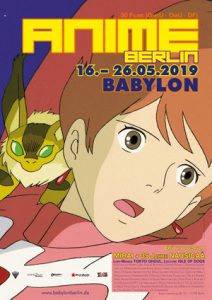 Auch in diesem Jahr findet das Anime Berlin Festival statt – 2019 nun bereits zum vierten Mal. An insgesamt elf Tagen werden im Rahmen des Festivals über 30 Anime-Klassiker wie auch -Neuerscheinungen unterschiedlichster Genres gezeigt: die diesjährigen Auswahl reicht von Ghost in the Shell über Nausicaä aus dem Tal der Winde bis hin zu Digimon. Ebenso auf dem Programm stehen neben einem Konzert, mehreren Kursen und Workshops u.a. die Vernissage der Ausstellung Neo-Tokio. Architektur in Animes wie auch ein Vortrag des Requisitenmachers Simon Weiss über seine Arbeiten für Wes Andersons Filme Isle of Dogs und Grand Budapest Hotel.
Auch in diesem Jahr findet das Anime Berlin Festival statt – 2019 nun bereits zum vierten Mal. An insgesamt elf Tagen werden im Rahmen des Festivals über 30 Anime-Klassiker wie auch -Neuerscheinungen unterschiedlichster Genres gezeigt: die diesjährigen Auswahl reicht von Ghost in the Shell über Nausicaä aus dem Tal der Winde bis hin zu Digimon. Ebenso auf dem Programm stehen neben einem Konzert, mehreren Kursen und Workshops u.a. die Vernissage der Ausstellung Neo-Tokio. Architektur in Animes wie auch ein Vortrag des Requisitenmachers Simon Weiss über seine Arbeiten für Wes Andersons Filme Isle of Dogs und Grand Budapest Hotel.
Auszüge aus der Veranstaltungsankündigung:
„Zur Eröffnung am 16.05.: Der Oscar-nominierte „Mirai – Das Mädchen aus der Zukunft“ erzählt „mit schier endloser Fantasie und so zartem Beobachtungswitz“ (The Daily Telegraph) von dem Jungen Kun. Sein Leben wird durch die Geburt der kleinen Schwester Mirai durcheinandergewirbelt. In eine fantastische Welt katapultiert, verweben sich Vergangenheit, Gegenwart und Zukunft […].
Der Kultanime „Ghost in the Shell“ von Production I.G hat sich schon 1995 der künstlichen Intelligenz gewidmet – und in was für berauschenden Bildern, die auch Hollywood zum Remake mit Scarlett Johansson inspirierten. […]
Anime hat wirklich kreative Fans! Zur Eröffnung findet die Vernissage am 16.05. 17:30 zu „Neo-Tokio. Architektur in Animes“ der Bunte Hunde Kunstschule, zur Fotoprojektion von Prop Maker Simon Weisse („Isle of Dogs“) und zum Tanuki-Zeichner Lukas Buda statt. Zudem bietet Zeichnerin Tora im Foyer ihre Werke an.
Außerdem bietet Anime Berlin: Die Lecture von Simon Weisse „Miniature Unit“ über seine Zusammenarbeit mit Wes Anderson bei „Isle of Dogs“ und „The Grand Budapest Hotel“ (18.05. 18:00), den Schnittkurs für Faltenröcke von Tora (18.05. 16:00) und den Vortrag von Michael Streitberg über „Vampire & Präsidenten. Mangas & Politik“ (18.05. 20:00). Wer mehr wissen will über einen unserer Lieblingsregisseure Masaki Yuasa und „Night is Short, Walk on Girl“ kommt zur Einführung von Lukas Laier von Tanuki Republic (21.05. 19:30). Zum Abschluss am 26.05. kann man nach dem Konzert des Animanga Chors im Workshop mit Chorleiterin Miwako Hidano lernen, wie man mit sauberer Aussprache Lieblings-Anime-Lieder singt. Weder japanische noch musikalische Kenntnisse, sondern nur Liebe zur Anime-Musik sind erforderlich.
Das Festival zieht auch dieses Jahr wieder eine Verbindung zu der bildenden Kunst. Der Dokumentarfilm „Kusama – Infinity“ gibt einen spannenden Einblick in Leben und Werk der heute 90-jährigen, japanischen Künstlerin Yayoi Kusama – „the biggest-selling female artist in the world.” (bbc.com).
Die wechselseitige und fruchtbare Beziehung von Vincent van Gogh und Japan feiern wir gleich mit drei Filmen: „Loving Vincent“, „Detective Conan: SunFlowers of Inferno“ und „Akira Kurosawas Träume“ – hier tritt Martin Scorsese als Van Gogh auf.“
Das komplette Programm sowie Tickets gibt es auf der Homepage der Veranstaltung.



